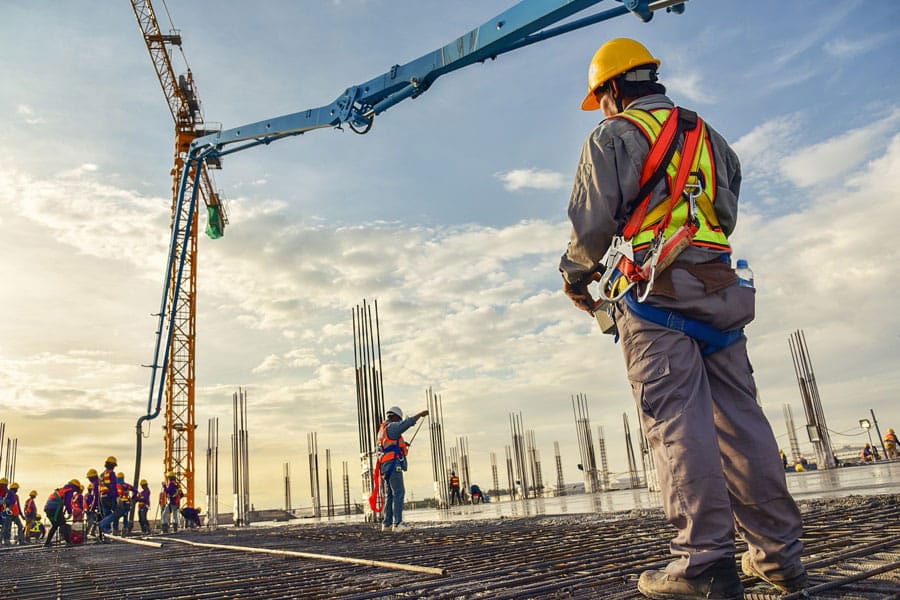Now, more than ever, we live our lives in buildings. Buildings require a lot of energy to build—and to heat, cool and operate.
About 36% of global energy is used by buildings, according to the United Nations Environment Programme, which coordinates the organization’s environmental activities and helps developing countries craft sustainable policies and practices.
In terms of carbon cost, operating the building accounts for 72% of a building’s emissions over its lifetime. This has made improving energy-efficient designs a major target for the global construction industry.
Still, that leaves 28% of building emissions on the table, which is why companies like general contractor Barton Malow are investing in new ways to make the actual construction process more environmentally friendly.
“As builders, we strive to decarbonize our buildings and reduce emissions on jobsites,” said Bob Grottenthaler, co-chair of Barton Malow’s Sustainability Community, an initiative recently set up to improve the company’s environmental footprint. Many of the initiatives the company is working on aren’t particularly flashy; they include small things like improving recycling on jobsites and in offices, going paperless and phasing out Styrofoam.
These efforts, though small, can add up to have a large impact—especially at a company the size of Barton Malow, which has 2,200 employees in offices in 15 states across the country.
Jobsite trailer of the future
Tons of energy is invested into a construction project that doesn’t go directly toward digging foundations or stacking I-beams.
One major area that Barton Malow has identified as a sustainability target is the traditional jobsite trailer. These temporary buildings are ubiquitous on most construction sites, but their transience also means that they’re not usually built with environmental sustainability in mind.
Quaid Spearing, a Barton Malow senior project engineer, is working to design what he called the “jobsite trailer of the future.” The project, which is partnering with researchers from Penn State University, is still in its early stages, but Spearing said the goal is to eventually make trailers energy-neutral through the use of solar panels and other renewables.
The trailers will also be set up to be entirely paperless, eschewing traditional blueprints and employing touchscreens that workers use to view BIM models. Recycling that is modular and reusable will be built in. Barton Malow is even looking for local partnerships with other businesses that might be able to use the trailers part-time, which would reduce the cost and per-person emissions of the facility.
Sourcing local materials
Local partnerships are vital to Barton Malow’s sustainability plan beyond the trailers. The company has committed to using local materials wherever possible to reduce the emissions from transporting the trailers to the jobsite.
“We’ve been trying to get partners in earlier to help with design assist because they maybe understand the local markets better than the architect would,” Spearing said. “A job I’m currently on right now, the architect has this brick they want to use out of Nebraska. Well, the carbon footprint of getting that material from there to Pennsylvania doesn’t make sense. So, our mason is in the process of recommending some equivalent local materials that are going to save the owner money and reduce our emissions at the end of the day.”
Exactly how much energy these initiatives might save is difficult to calculate, but Grottenthaler said that’s another area the company is trying to improve.
For instance, Barton Malow has set up several initiatives to track just how much carbon is being emitted at various points in the construction process. Grottenthaler said this can be accomplished, for example, with sensors that measure the air itself or through careful analyses of supply chains and logistics.
“Buildings have to support the health and well-being of the people who occupy them,” Grottenthaler said.
The construction industry remains a long way from being environmentally sustainable at desirable levels, but every little bit helps—and industry leaders are seemingly thinking in the right direction.















